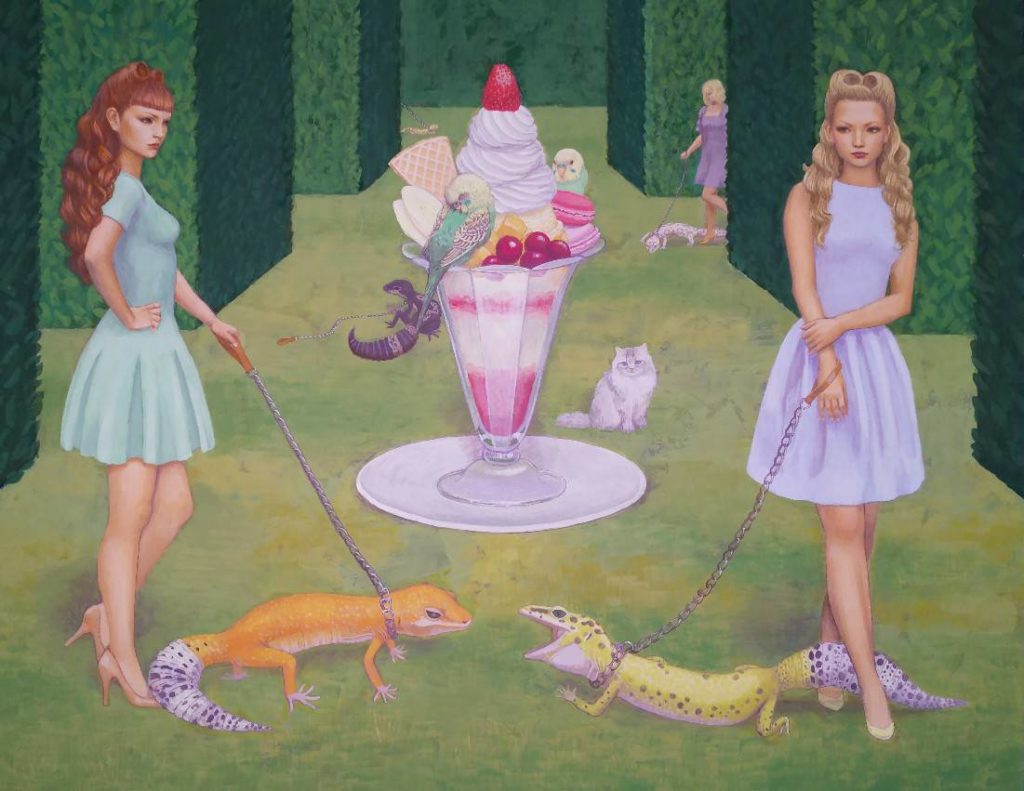Animals used to be nothing more than food and tools. Now, every day, humans are given the opportunity to heal them.
There is a Japanese English word called animal therapy. It refers to the practice of restoring mental health by reducing inherent stress through contact with animals. Although there is little academic evidence, people living in a pet-heavy country like modern Japan would have no doubt about the positive effects of contact with animals.
It is interesting to note the number of people who watch other people's pets through video sites and social networking sites. The reason why some people are bent on watching a video of a single cat for hours on end is not for entertainment, but rather for healing. Looking at the situation alone, it seems that animal therapy is possible even if humans are virtual animals.
This article explores the relationship between animals and art, as depicted in the Lascaux and Altamira cave murals, which are said to be the beginning of art.
Inga Makarova / Inga Makarova
Inga Makarova is an artist who works with a wide variety of animals, from typical pet animals such as dogs and cats to dangerous insects such as bees and exotic animals such as chameleons. She excels at capturing the biological characteristics of each animal and extracting commonalities with human culture, and her work has a contemporary artistic aspect that goes beyond mere depictions of animals.
 Dog
Dog
80 x 60 cm Dogs are often depicted as motifs, perhaps because of Makarova's emotional attachment to them. The color tone is vivid and poisonous, but the small body is somehow adorable, perhaps expressing Makarova's love for dogs.
 80 x 60 cm
80 x 60 cm For more information about the artist, click here.
Aihito Kumori
Kumori is another artist who has acquired a deep insight into animals.
However, in addition to Makarova's covetous gaze on animals, the level of abstraction rises even higher, perhaps because of the deconstruction of animal forms that takes place in his mind.
He skillfully uses the dichotomy of complex geometric line drawings and simplified motifs, static and dynamic images, to depict animals and divine beings based on animals. The various animals that Japanese people encounter in their daily lives are transformed in ways that are sometimes catchy and sometimes frightening, and the characteristics of each animal are exaggerated.
 Jitsu (stay still)
Jitsu (stay still)
116.7 x 116.7 cm What is also noteworthy is the way he treats animals, which are usually considered to be unconscious, as beings with a clear consciousness like humans, thereby creating a kind of characterization. Although the characterization of animals can be seen in the West as well, the exaggerated facial expressions and the spontaneous and vigorous brushwork that only the Japanese can produce are reminiscent of the caricatures of birds and animals.
 Bird 10262019,
Bird 10262019,
27.3 x 22 cm For more information about the artist, click here.
Yuko Hizume
There are artists who take a different approach to painting animals than the above two artists. Hizume is one of them.
Hizume depicts the beauty of intelligent, wild and strong women dressed in classic Japanese and Western fashion. Flanked by animals that we rarely see directly, such as tigers, cranes, and woofers. This style of painting is said to be out of gratitude to her mother and the animals.
 Afternoon Irritation
Afternoon Irritation
72.7 x 91 cm Both of the women in the motifs have a dignified appearance, and their spiritual strength comes to us from across the screen. The animals function as a medium through which this spirituality is conveyed to us. A tiger adds more power, while a lizard accelerates the feminine and unrestrained impression.
Looking at Hizume's works, we can share the image of the natural man and the animal, and the relationship between the two will be reaffirmed and reconsidered in the mind of the viewer.
 Shu
Shu
31.8 x 41 cm
Click here for more information about the artist
Due to the unprecedented pet boom, the number of pets kept at home exceeded 19 million in 2003, which is more than the number of children under 15 years old. The answer to the question of how to deal with animals, which are more than just food and tools, and are becoming more organically integrated into human society, may lie in art.